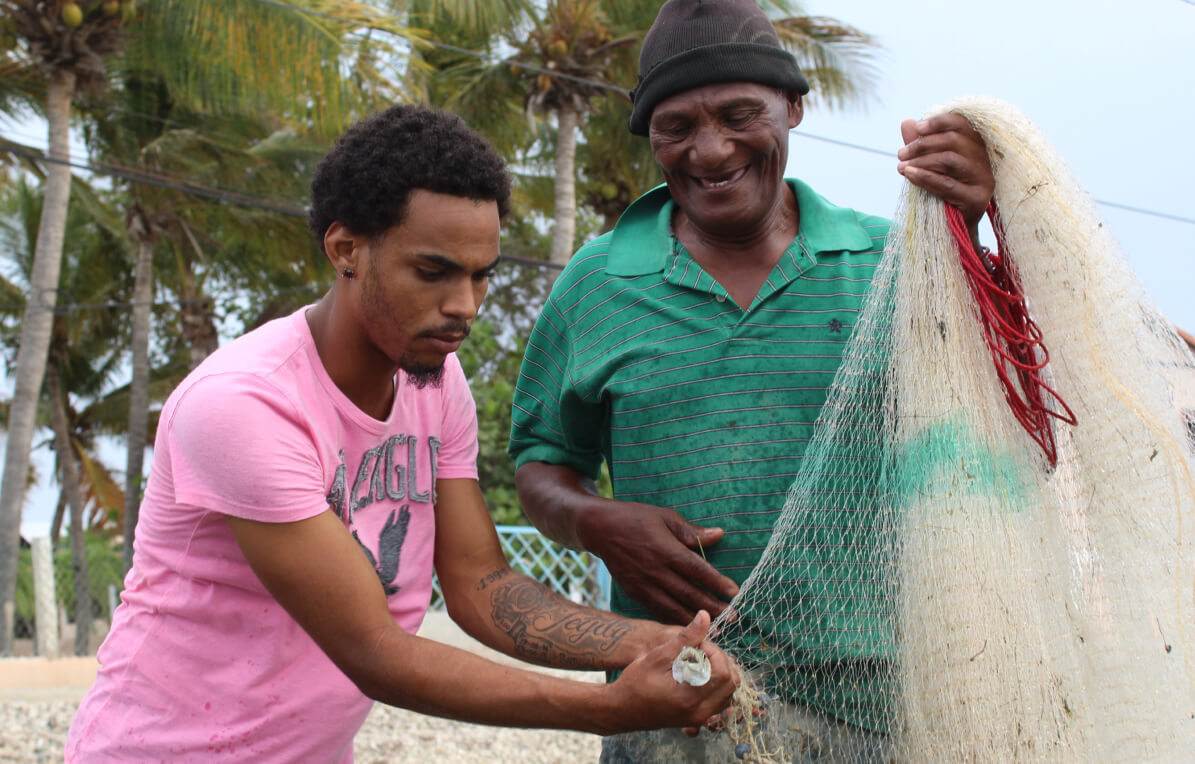By Jennifer Brookland
A throng of adorable kindergarteners are clamoring to answer their teacher’s questions on road safety at a one-room school in Barrio El Rubi, Honduras. Crowding around the plastic poster that demonstrates correct street crossing, their high-pitched voices enthusiastically shout the ways to dodge the dangers of the Honduran commute.
It’s a lesson they’ll have to master all too soon. With no primary school in their area, children lucky enough to continue on to first grade will have to take the bus downtown on their own.
They might complete primary school and have a shot at a factory job making products for companies like Hanes and Fruit of the Loom.
But at just over one dollar, the roundtrip bus fare is prohibitive for many of their kindergarten classmates. Those children will have to stay home, their options for education and work nearly nonexistent.
Claudia García Llaniz wants all of the kids in her barrio to have a brighter future than the drugs, violence and gang warfare that seem to await far too many of them.
“Anything that helps kids, you let me know and I’ll push it forward,” she says from the leafy courtyard of her house, where black-feathered chickens tut about and the smell of a neighbor’s burning avocado tree invades over the wooden fence.
As she walks slowly down the streets of the community she’s been a part of for the last 15 years or so, García Llaniz points to the improvements: ramshackle stick houses with thatched roofs have changed to plaster and concrete, water pumps have been replaced with taps.
Indeed it seems calm and sunny here, where dozens of cows munch on the grass at the end of the main road and the neighborhood gas deliveryman makes his rounds on a red motorcycle.
But the quiet belies a violence that threatens to undermine all the community’s efforts to make things better.
The gang graffiti marring the walls is a mute reminder that this is not just home, but turf.
García Llaniz walks down a road she says used to be full of houses. A few empty structures remain, in various states of disrepair. People just left, like the family who fled their eggshell blue house after their child was killed. But that’s private, she trails off.
Almost 4,800 young people are estimated by UNICEF to be gang members in Honduras, and most of them joined between the ages of 11 and 20. A lack of education and employment opportunities push kids into a way of life that has earned Honduras the tragic distinction of having the highest homicide rate in the world.
García Llaniz points out an empty lot, dotted with shrubs. There were supposed to be apartments here, she explains. But no one wanted to move in because of the security situation.
Neighbors looked into renting the land to build a school, but they can’t afford the rent.
Communities like el barrio Rubi are typical: full of hopeful people taking small steps forward and trying not to take any back.
Throughout Honduras, people like García Llaniz are not content to watch their neighborhoods disappear into the overgrowth, choked by the weeds of drug trafficking, killings, kidnap, and extortion. As a start, they established that kindergarten themselves: the teacher explaining how to cross the street is a neighborhood volunteer.
With the help of an organization called FUNADEH, which receives technical support and grants from Counterpart International’s Impactos program, they’re trying to put in a computer center in the connecting room. It would be a huge advance in the opportunities kids and adults in this community have to learn and to connect.
They also started a class to teach young people to work in a bakery.
Donors and international organizations tend to look for the big changes- the glowing success stories and the big numbers. But here, in el barrio Rubi, FUNADEH and Impactos are helping people like García Llaniz fight every day for the little things.
They’ve hit a few snafus though.
Hooking up a computer to the electric box on the wooden post outside the building causes all the circuits to blow.
And for some reason, they haven’t been able to fill the 25 slots in the baking course.
Maybe they’re offering it at the wrong time of day when people have other things they have to do. But what if García’s worst fear is true? That young people in this community are so used to the violence and lack of opportunity that they have become apathetic.
García Llaniz is hopeful both projects can move forward. After all, the 11,000 lempira ($550 dollars.) it will cost for the computer lab’s electric work is no longer an unimaginable sum thanks to FUNADEH and Impactos.
And they’ll figure something out for the baking class. It’s a great opportunity, after all, in a place where those are hard to come by.
A little bit of help goes a long way toward reinforcing their confidence that fighting for their community one cookie, one computer, one kindergartener at a time is worth the effort.




